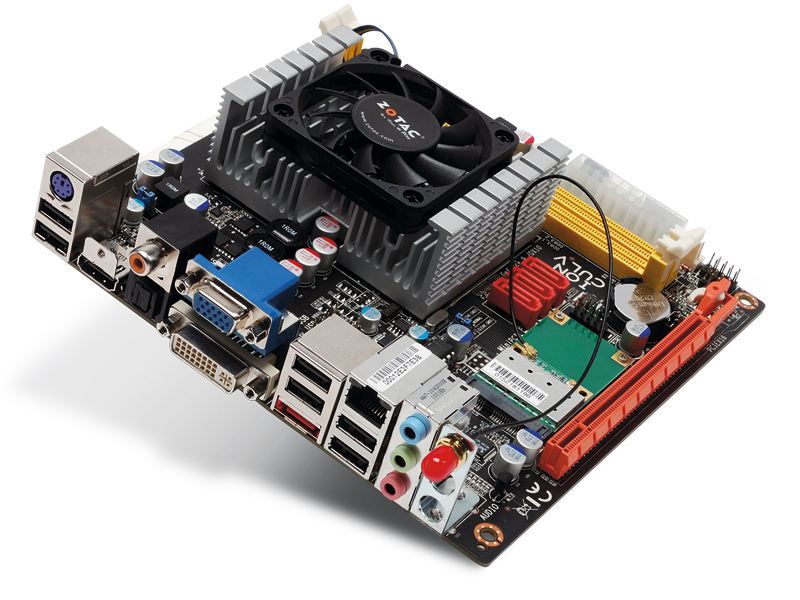TechRadar Verdict
Combination of NVIDIA's ION chipset and a Core 2-class CPU promises much but fails to deliver
Pros
- +
Super feature set for an ITX board
- +
Penryn-class processor
Cons
- -
Disappointing CPU performance
- -
NO USB 3.0 or SATA 6.0Gbps
Why you can trust TechRadar
We're big fans of NVIDIA's plucky little ION motherboard chipset. What we haven't enjoyed is the feeble Intel Atom processor it's been saddled with. But what if you could have all the yummy graphics goodness of ION combined with a tastier CPU? Luckily, that's the very meaning of the Zotac IONITX-P-E's existence.
Kiss goodbye to the dreadful Atom chip. Say hello to an Intel Celeron SU2300. One of Intel's lesser known and more esoteric processor models, the SU2300 is a low voltage version of ye olde Core 2 CPU running at 1.2GHz.
Simply add memory, storage and a power supply, therefore, and you have a pukka PC.
Indeed, VGA, HDMI and even dual-link DVI connectivity are supplied as standard giving you the option to drive everything from a high resolution desktop PC to a home cinema system.
Intriguingly, Zotac has also provided a full 16-lane PCI Express expansion slot enabling high-end discrete graphics as an option. If the ION chipset part of the Zotac IONITX-P-E motherboard is a well-known quantity, the Intel Celeron SU2300 CPU is something of a head scratcher.
True to recent Intel tradition, the branding (in this case the ancient Celeron moniker) isn't much help. But no matter. We can reveal that the SU2300 is in fact a Penryn class processor. Thus, it's a 45nm dual-core chip. Clocked down to 1.2GHz to achieve ultra-low voltage operation, the SU2300 also makes do with just 1MB of shared cache memory.

Low power, low grunt
That's hardly a recipe for killer numbercrunching performance from this motherboard. However, the upside is a claimed TDP of just 10 watts.
It's also worth remembering that the Celeron's two cores are proper desktop-class items with pukka out-of-order instruction handling. It's the Atom's in-order architecture that arguably does most to compromise performance.
Further noteworthy features include integrated N-spec WiFi and the aforementioned 16-lane graphics slot. In practice, the latter is probably an irrelevance.
In testing, the Celeron processor simply doesn't have the gumption for running modern games, regardless of the GPU it's paired with. In fact, the overall performance of the SU2300 Penryn processor can only be described as disappointing.
Granted, power consumption when running on the ION integrated graphics is absolutely puny. But then so is the performance. In terms of the end-user experience, it's only marginally better than a dual-core Atom processor.
You absolutely, positively wouldn't want to rely on this system to do any serious processor-intensive work.
In fact, even when paired with an ultra-fast solid state drive, the general performance and responsiveness in Windows we experienced felt a little sluggish.
Technology and cars. Increasingly the twain shall meet. Which is handy, because Jeremy (Twitter) is addicted to both. Long-time tech journalist, former editor of iCar magazine and incumbent car guru for T3 magazine, Jeremy reckons in-car technology is about to go thermonuclear. No, not exploding cars. That would be silly. And dangerous. But rather an explosive period of unprecedented innovation. Enjoy the ride.
